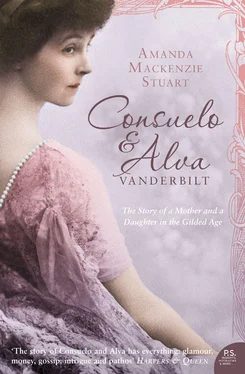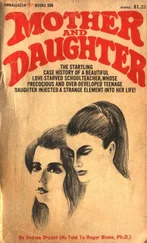From a Vanderbilt point of view, William K.’s precipitate departure to Europe was both unfortunate and misjudged, for it handed control of the story to Alva. When the divorce was finally granted on 6 March, the dam of publicity burst. Never a newspaper to understate matters, the World described it as ‘the biggest divorce case that America has ever known. It is, in fact, the biggest ever known in The World. ’ 71 The paper saw it as its moral duty to provide the reading public with everything it wanted to know, while simultaneously lambasting the rich for lax moral standards. One striking feature of its reportage, however, was the extent to which it favoured Alva over William K., leading to the suspicion that she had managed to brief its journalists. Mrs Vanderbilt had not fled to Europe, like her husband wrote the World. She was determined ‘to stay here until the divorce should be publicly announced; not to run away from the publicity which reflects only on her husband, who is pronounced guilty’. 72 A photograph of Nellie Neustretter was printed in what looked suspiciously like her underwear. Alva (though the report was not entirely complimentary) was presented as the unhappy victim, made peevish by her philandering husband; and Oliver Belmont was never mentioned at all.
It is possible that Alva arranged a deal. Oliver’s name would be kept out of the World ’s story in exchange for a most intriguing piece of information. On the morning of 7 March, the World produced a sensational piece of news. Nellie Neustretter was an elaborate sideshow, possibly just a decoy. The real object of William K.’s affections, and the true reason for Alva’s implacable fury, was that her husband had been having a longstanding affair with her very old friend, Consuelo, Duchess of Manchester.
There is no means of establishing for sure whether this story is true. It was never formally denied by anyone involved, however, and it may have some basis. Years later Sara Bard Field told an interviewer that although Alva would not allow her to mention it in the memoirs, William K. ‘had brought his mistresses right into the home’ including ‘poor women of the nobility of England’. 73 Consuelo Manchester, to all intents and purposes, disappeared from Alva’s life after 1894, which is odd since she was not simply Consuelo’s godmother and an English duchess, she was also a relation by marriage after Alva’s sister, Jenny, married Fernando Yznaga. In her memoirs, Consuelo (Vanderbilt) makes very few references to her godmother. 74 Consuelo Manchester was also famously unhappily married. Her husband had been declared bankrupt in 1890, and had abandoned her in favour of a music-hall singer whom he escorted round London before his death in 1892. She was constantly short of money; her other lovers included the Prince of Wales. The World suggested the affair between Consuelo Manchester and William K. was well established (though not exclusive): a ‘titled American woman’ and William K. had been linked eleven years earlier, in 1884. There was even one report that Alva had almost thrown a ‘titled American friend’ out of the marital home as early as 1879. 75 William K.’s inexplicable conduct with regard to Nellie Neustretter was now quite comprehensible, said the World. He was simply trying to deflect attention away from a scandal involving his mistress by flaunting a relationship with a grande cocotte.
Town Topics , peeved at its failure to uncover this story first, managed to keep it alive by downplaying it. ‘According to the rumour most generally credited among those who know nothing on the subject, one of them is to marry a banker and the other a duchess.’ 76 Whatever the truth, the warm relationship between William K. and Consuelo Manchester was to be highlighted in the most tragic fashion possible within days of this publicity firestorm. In a coincidence far more dreadful than the sinking of any yacht, Consuelo Manchester’s daughter, who was named after Alva and who was only in her late teens, died in Italy ten days after the divorce was granted. Acutely distressed, Consuelo Manchester turned to William K. for help. On Saturday 16 March, he gave orders to the captain of the Valiant to sail to Civitavecchia in Italy. The captain wrote in the ship’s log: ‘In the afternoon we embarked the remains of the late Lady May Alva Montagu, accompanied by the Duchess of Manchester, Lady Alice Montagu, Miss Yznaga, Dr A. Muthie, Mr F. Yznaga, and servants, and at 6 p.m. sailed for Marseilles.’ 77 According to the same log, William K. went up to Rome by the 4.50 p.m. train, possibly to assist with legal formalities, or to avoid making scandalous rumours worse. The Duchess of Manchester and her party sailed with Lady Alva Montagu’s body back to Marseilles, and from thence to Paris. The Valiant then turned round and went back to Italy to pick up the rest of the party. William K. was back in Paris by 2 March.
This story of the liaison refused to go away for several months. It was noted that Alva did not attend her namesake’s funeral. By April, Town Topics was reporting that the rumour mill had it that the death of Lady Alva Montagu had marked a turning point in the relationship between William K. and Consuelo Manchester, and that there was a persistent story ‘that will seemingly not die down … to the effect that Mr Vanderbilt would have become the husband of the Duchess of Manchester had it not been for her bereavement in the loss of her twin daughter Lady Alva Montagu’. 78 By the middle of June, a consensus seemed to be emerging in the society press that Nellie Neustretter had indeed simply been engaged by William K. as co-respondent, though this does not wholly explain why he felt obliged to spend several months in her company.
The affair caught the attention of Henry James, also in Paris in the summer of 1895, who thought that William K.’s relationship with Nellie was part of a complicated strategy to force Alva into divorce, and that it had the makings of a short story: ‘The husband doesn’t care a straw for the cocotte and makes a bargain with her that is wholly independent of real intimacy. He makes her understand the facts of his situation – which is that he is in love with another woman. Toward that woman his wife’s character and proceedings drive him, but he loves her too much to compromise her. He can’t let himself be divorced on her account – he can on that of the femme galante – who has nothing – no name – to lose.’ 79 This would become the starting point for James’s novel, The Special Type , published in 1903.
Under the terms of the divorce, Alva kept Marble House, which had already been made over to her at her insistence, and refused William K.’s offers of both 660 Fifth Avenue and Idle Hour, which were ‘rendered disagreeable by unpleasant memories’. 80 The terms of the divorce settlement were never made public, in spite of furious efforts by the press to find out, but Alva received a sum close to $2.3 million and an income of about $100,000 a year, with provision that specified amounts of the capital sum should be transferred to each of the children on marriage or at the age of twenty-eight. 81
Predictably, Alva faced a harsh reaction from some elements in society, but as ever, she presented herself as having toughed it out: ‘I did not fail myself at this stormy time. I got my divorce and just as in childhood days I accepted the whipping my mother gave me for taking the forbidden liberty, so I bared my back to the whipping of Society for taking a freedom which would eventually better them as well as myself.’ 82 In spite of Choate’s warnings about the viciousness of hegemenous males, society women were worse. ‘Yes, and they put on the lash, especially the women, and especially the Christian women. When I walked into Trinity Church in Newport on a Sunday soon after obtaining my divorce, not a single one of my old friends would recognize me.’ 83
Читать дальше












